Tretinoin Facial Hair Risk Calculator
Personalized Risk Assessment
Based on your tretinoin usage and skin type, we'll estimate your risk of experiencing facial hair growth.
Your Personal Risk Assessment
Ever noticed a few extra whiskers after starting a new acne cream? You’re not alone. Many people wonder if tretinoin facial hair is a real side‑effect or just a coincidence. This guide breaks down what tretinoin does, how it might touch hair follicles, and what you can do if the whiskers start popping up.
What is Tretinoin?
Tretinoin is a synthetic form of retinoic acid, the active metabolite of vitamin A, used primarily as a topical treatment for acne and photo‑aged skin. It was first approved by the FDA in the early 1970s and has since become a staple in dermatology cabinets worldwide.
How Tretinoin Works on the Skin
When you apply tretinoin, it binds to retinoic acid receptors (RARs) inside skin cells. This triggers three main actions:
- Increases cell turnover, helping clogged pores clear faster.
- Stimulates collagen production, reducing fine lines.
- Normalizes melanin distribution, which can lighten dark spots.
Because it accelerates the shedding of dead cells, many users see smoother skin within weeks.
Facial Hair Basics: The Growth Cycle
Hair on the face follows a three‑phase cycle:
- Anagen (growth phase) - cells in the hair bulb divide rapidly. This phase can last years for beard hair.
- Catagen (transition phase) - growth stops, and the follicle shrinks.
- Telogen (resting phase) - the hair eventually sheds and a new cycle begins.
Hormones, especially androgens like testosterone and dihydrotestosterone (DHT), play a key role in pushing follicles into a longer anagen phase, which is why men typically develop thicker facial hair.
Can Tretinoin Influence Facial Hair?
There’s no magic formula that says “tretinoin = more beard.” However, a few mechanisms could explain why some users report extra whiskers:
- Increased cell turnover may expose dormant hair follicles, making them visible sooner.
- By thinning the outermost skin layer, tretinoin can enhance the penetration of other topical agents (like minoxidil) that are known to stimulate hair growth.
- In rare cases, the irritation from tretinoin leads to a mild inflammatory response. Inflammation can temporarily shift follicles into anagen, producing fine, vellus‑type hairs.
Importantly, these effects are usually subtle and affect only a small portion of users.
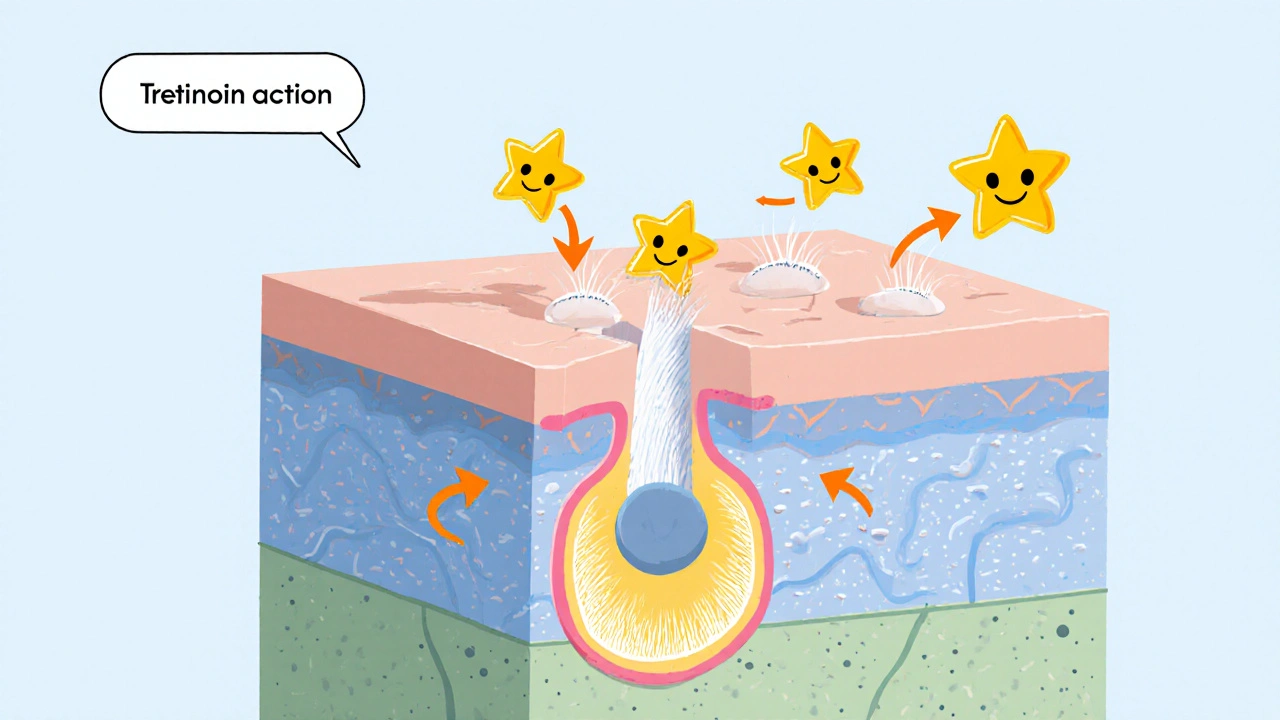
What the Research Says
Scientific literature on tretinoin and facial hair is limited, but a few studies give clues:
- A 2022 double‑blind trial on 120 acne patients noted that 7 % reported “new fine facial hairs” after three months of daily 0.05 % tretinoin. The authors attributed this to increased epidermal turnover rather than hormonal changes.
- Research on Isotretinoin (oral retinoid) shows a higher incidence of hypertrichosis, but topical tretinoin’s systemic absorption is negligible, making the risk far lower.
- Case reports from dermatology clinics worldwide describe occasional vellus‑hair emergence during retinoid therapy, often resolving when the product is discontinued or switched to a lower strength.
Overall, the consensus is that tretinoin can cause a temporary, mild increase in fine facial hair for some, but it’s not a reliable method for inducing beard growth.
Tips to Manage Unwanted Hair Growth
If you notice extra whiskers and want to keep them at bay, try these practical steps:
- Adjust concentration. Dropping from 0.1 % to 0.025 % often reduces irritation and associated hair changes.
- Limit frequency. Apply every other night instead of nightly; this gives skin a breather.
- Combine with gentle exfoliation. A mild chemical exfoliant (e.g., 5 % glycolic acid) used a few times a week can smooth the skin without overstimulating follicles.
- Use a barrier. A non‑comedogenic moisturizer applied after tretinoin locks in moisture and calms inflammation.
- Consider hair‑removal methods. For persistent vellus hairs, a light‑touch waxing or an electric facial trimmer works well without worsening skin sensitivity.
Always patch‑test any new product and monitor how your skin responds over a 2‑week period.
Comparing Tretinoin with Other Retinoids
| Retinoid | Typical Strength (topical) | Primary Skin Benefit | Known Hair‑Related Side Effect |
|---|---|---|---|
| Tretinoin | 0.025 % - 0.1 % | Accelerates cell turnover, reduces acne lesions | Occasional fine facial hairs (rare) |
| Adapalene | 0.1 % - 0.3 % | Targets comedones, less irritation | Minimal hair impact |
| Tazarotene | 0.05 % - 0.1 % | Strong keratinocyte regulation, treats psoriasis | Can cause temporary hypertrichosis in sensitive individuals |
| Retinol | 0.25 % - 1 % | Gentle anti‑aging, converts to tretinoin in skin | Very low hair‑related risk |
Choosing the right retinoid depends on your skin type, tolerance level, and whether hair‑related side effects matter to you.
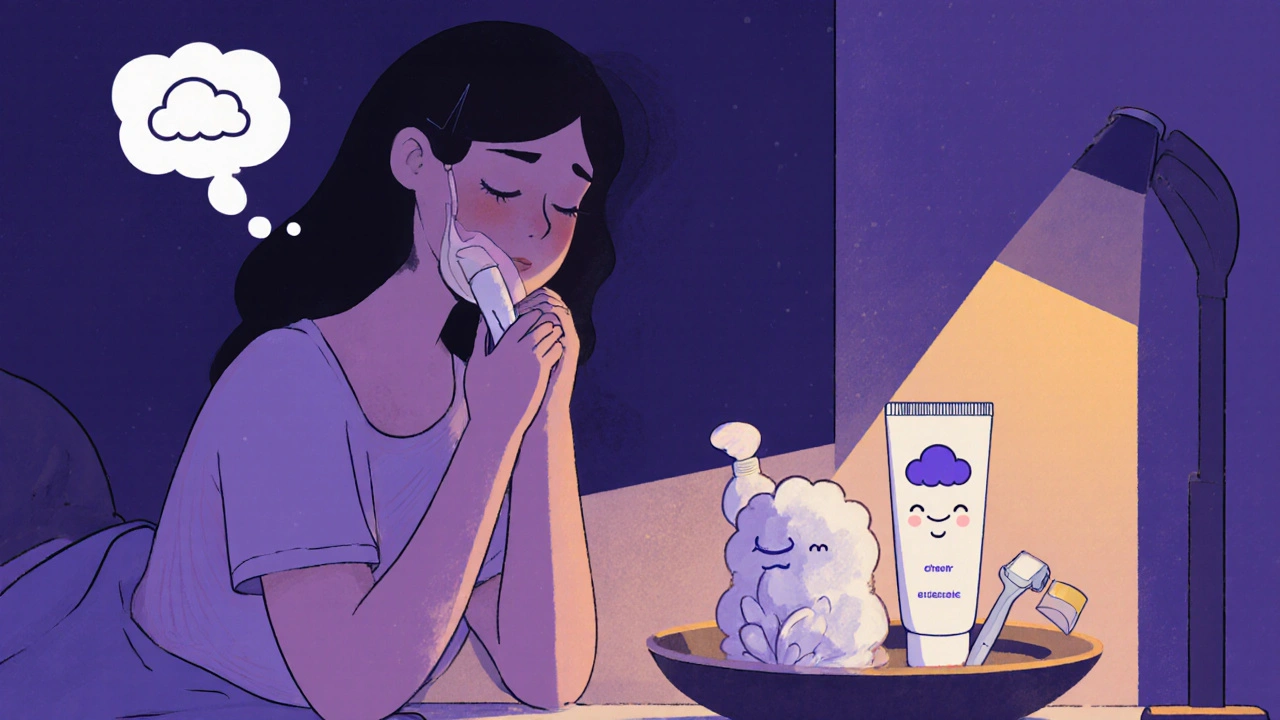
When to Talk to a Dermatologist
If you experience any of the following, schedule a consultation:
- Persistent redness or burning that lasts more than a week.
- Rapidly spreading facial hair that feels coarse rather than fine.
- Severe acne flare‑ups despite consistent use.
- Allergic reaction signs such as swelling, hives, or itching.
A dermatologist can adjust dosage, suggest an alternative retinoid, or prescribe an adjunct therapy to balance hair growth.
Quick Takeaways
- Tretinoin is a powerful retinoid that speeds up skin cell turnover.
- It may cause a temporary increase in fine facial hairs for a minority of users.
- Lowering concentration or frequency usually curbs the hair effect.
- Other retinoids like adapalene have a lower risk of hair‑related side effects.
- Consult a dermatologist if irritation or unwanted hair become persistent.
Frequently Asked Questions
Can tretinoin make my beard grow thicker?
Most people do not see a significant change in beard density. Tretinoin may reveal fine vellus hairs temporarily, but it doesn’t boost androgen‑driven beard growth.
Is the hair growth reversible after stopping tretinoin?
Yes. Once you discontinue or lower the retinoid, the extra fine hairs typically shed within a few weeks as the hair cycle normalizes.
Should I use a moisturizer with tretinoin to reduce hair side effects?
A fragrance‑free, non‑comedogenic moisturizer applied after tretinoin can calm irritation, which indirectly helps keep hair changes at bay.
Are there any natural alternatives to tretinoin for acne?
Options like niacinamide, azelaic acid, and low‑strength benzoyl peroxide can improve acne with minimal impact on hair follicles, but they may work slower than tretinoin.
What strength of tretinoin is safest for sensitive skin?
Starting with 0.025 % (often marketed as “retinoid serum”) applied every other night is a gentle entry point for sensitive skin.
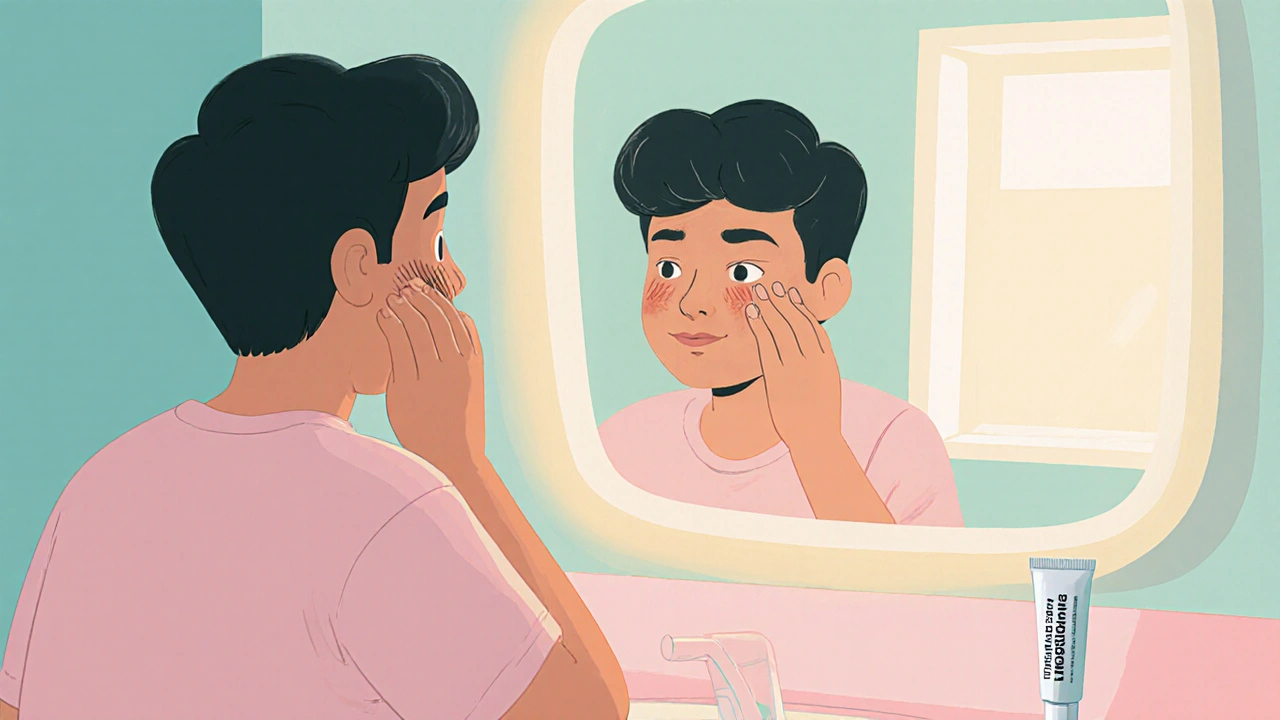
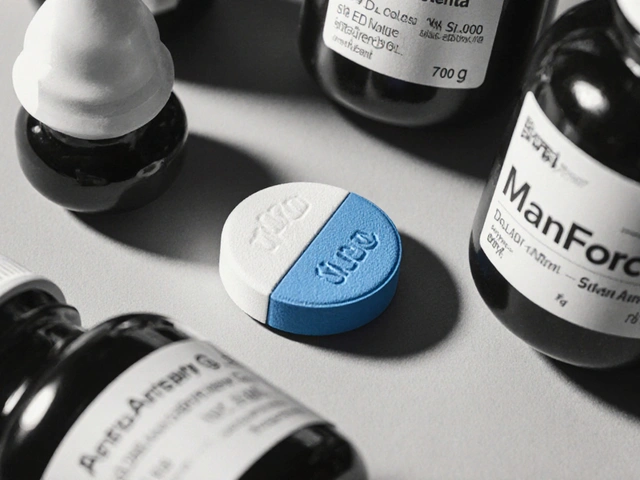
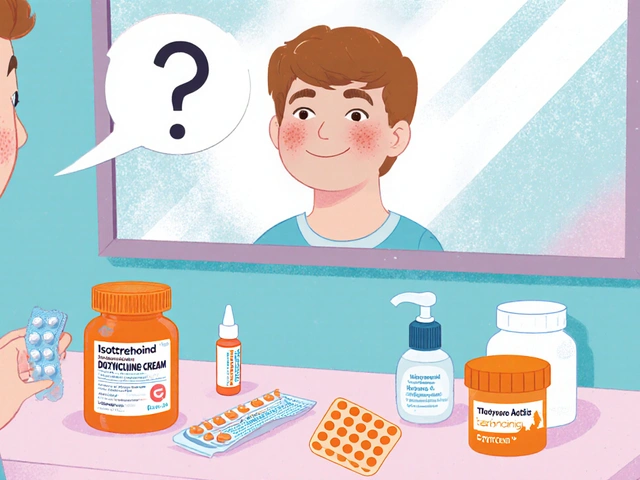
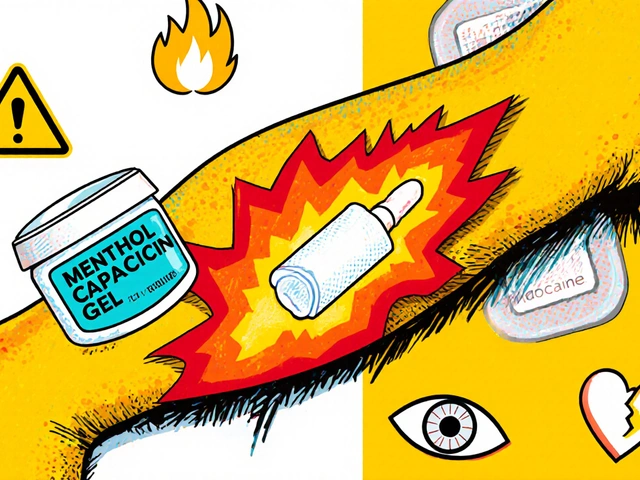

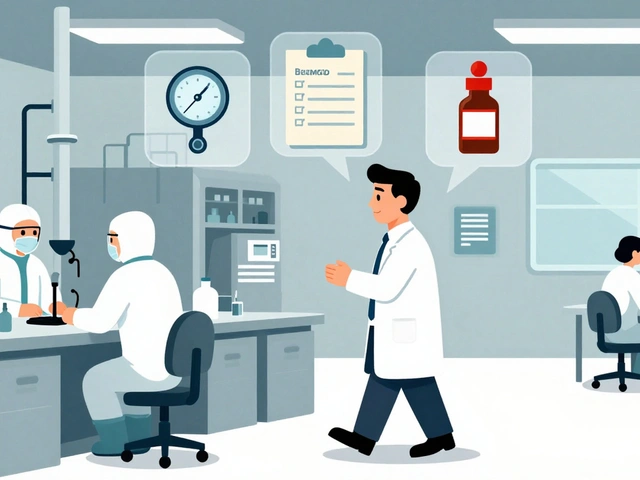
Emma Williams
18 October, 2025 . 12:48 PM
Tretinoin can be a game‑changer for acne, just watch how your skin reacts.
Stephanie Zaragoza
26 October, 2025 . 14:15 PM
The pharmacodynamics of tretinoin involve retinoic‑acid receptor activation, which in turn accelerates keratinocyte turnover; this mechanism is well‑documented in dermatologic literature. Importantly, the increase in epidermal shedding can unmask dormant vellus follicles, leading some users to notice fine hairs that were previously invisible. A 2022 double‑blind trial reported that only 7% of participants observed new facial hairs after three months of consistent use, suggesting the phenomenon is relatively uncommon. Moreover, the study emphasized that the hairs were typically fine, non‑terminal, and resolved spontaneously upon discontinuation or dosage reduction. Clinicians therefore advise patients to start with the lowest effective concentration, usually 0.025%, and to monitor the skin’s response before escalating strength. If irritation occurs, applying a fragrance‑free moisturizer can mitigate inflammation and potentially lessen the hair‑related side effect. Overall, while the link between tretinoin and beard growth exists, it remains modest and should not be considered a primary therapeutic outcome.
Matthew Miller
3 November, 2025 . 22:15 PM
Ready to tackle those breakouts? Keep the routine steady, and if a few whiskers pop up, remember it’s usually temporary – stay consistent and the skin will thank you!
Tracy O'Keeffe
13 November, 2025 . 04:28 AM
Ah, the melodramatic tale of tretinoin‑induced whiskerfication! One might argue that the skin’s hyper‑renewal is merely unveiling the hidden chorus of nano‑vellus strands, a veritable epidermal symphony of follicular rebellion. Yet, let us not be duped by the simplistic narrative of “just a cream”: the dermato‑logical interplay of retinoic‑acid receptors subtly nudges dormant papillae into the anagen spotlight, producing a fleeting moustache of microscopic poils. In the grand lexicon of dermatology, this is a footnote, not a headline, though the anecdotal chronicles on forums can be as flamboyant as a baroque opera. So, if you find yourself sprouting “hair‑like” projections, know that the phenomenon is predominantly cosmetic, transient, and largely benign – albeit a delightful conversation starter at the next soirée.
Joe Moore
22 November, 2025 . 10:41 AM
What they don’t whisper in the glossy ads is that the big pharma labs have a vested interest in keeping you guessing about side‑effects. The subtle hair sprouting is a clever diversion, a smoke‑screen to mask the deeper epidermal remodeling they’re pushing through your pores. Rest assured, the occasional vellus hair is a tiny price for the real agenda of skin‑tightening and long‑term market dominance.
Ayla Stewart
1 December, 2025 . 16:55 PM
Adjusting the application frequency is a simple yet effective way to reduce irritation and, consequently, the chance of fine hair emergence. Starting every other night and using a gentle moisturizer can make a noticeable difference.
Poornima Ganesan
10 December, 2025 . 23:08 PM
First, let me clarify that the relationship between tretinoin and facial hair is not a myth, but it is also not a miracle. The scientific literature indicates that only a small fraction of users-approximately 5 to 10 percent-experience a noticeable increase in fine vellus hairs. This occurs because tretinoin accelerates epidermal turnover, which can expose follicles that were previously hidden beneath a layer of dead skin cells. When these follicles become visible, they may produce light, non‑terminal hairs that are easily mistaken for a beard growth surge. Second, the effect is typically temporary; once the skin acclimates or the retinoid concentration is reduced, the extra hairs usually shed within a few weeks. Third, the dose matters: higher concentrations, such as 0.1 %, are more likely to cause irritation and, by extension, a higher chance of hair emergence, whereas lower strengths like 0.025 % are gentler and less prone to this side effect. Fourth, the vehicle of the formulation can influence penetration; silicone‑based carriers may enhance delivery, subtly increasing follicular activation. Fifth, concomitant use of other actives, such as minoxidil, can synergize with tretinoin’s exfoliative action, amplifying hair growth signals. Sixth, individual hormonal milieu plays a crucial role; people with higher circulating androgens may notice the effect more prominently. Seventh, skin type cannot be ignored-those with oily or combination skin often experience faster turnover, which can accentuate the phenomenon. Eighth, patient education is vital: informing users about the possibility of fine hair emergence prepares them to distinguish it from pathological hypertrichosis. Ninth, if the hair becomes bothersome, simple mechanical removal methods-like a gentle electric trimmer-are recommended rather than abrasive chemical depilatories that could exacerbate irritation. Tenth, always conduct a patch test when initiating a new retinoid regimen to gauge skin tolerance. Eleventh, ongoing monitoring during the first two months helps identify whether the side effect is transient or persistent. Twelfth, dermatologists may suggest alternating nights with a hydrating serum to mitigate irritation. Thirteenth, switching to a less irritating retinoid, such as adapalene, can be an effective alternative for sensitive patients. Fourteenth, awareness of the limited systemic absorption of topical tretinoin reassures that the hair changes are localized, not a sign of systemic hormonal shifts. Finally, if the hair growth is excessive, coarse, or accompanied by other concerning symptoms, a prompt dermatology consult is warranted to rule out underlying conditions.
Linda A
20 December, 2025 . 05:21 AM
In the broader schema of cutaneous pharmacology, each intervention reshapes the delicate equilibrium between cellular renewal and follicular quiescence. Tretinoin, as a catalyst of epidermal turnover, merely tips this balance momentarily, unveiling what was always present beneath the surface. Thus, the emergence of fine hairs reflects a transient perturbation rather than a permanent alteration of one's androgenic destiny. Recognizing this nuance helps temper exaggerated expectations while appreciating the therapeutic gains.